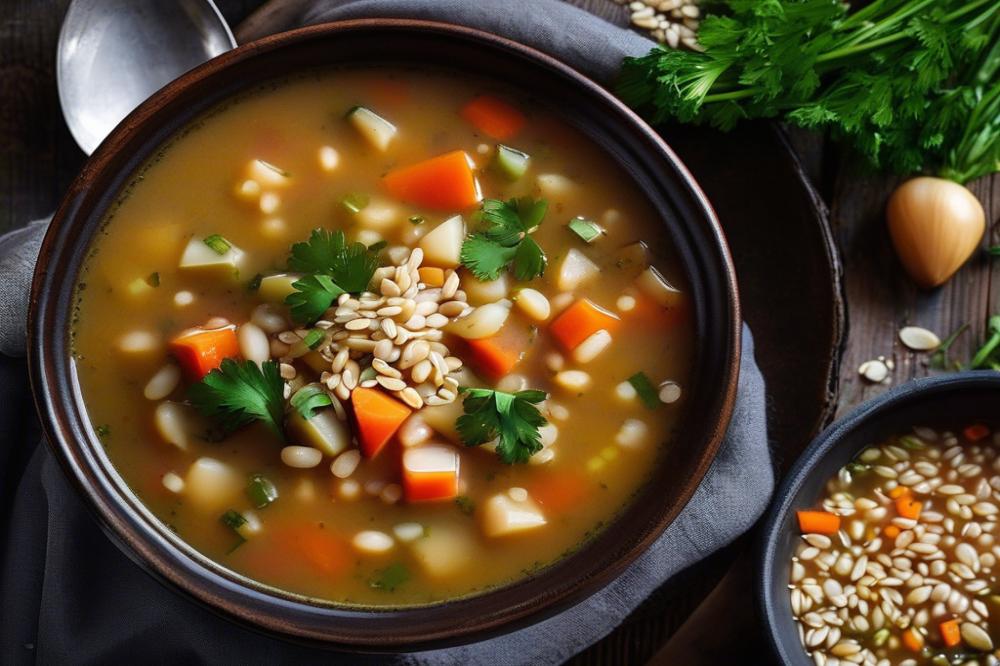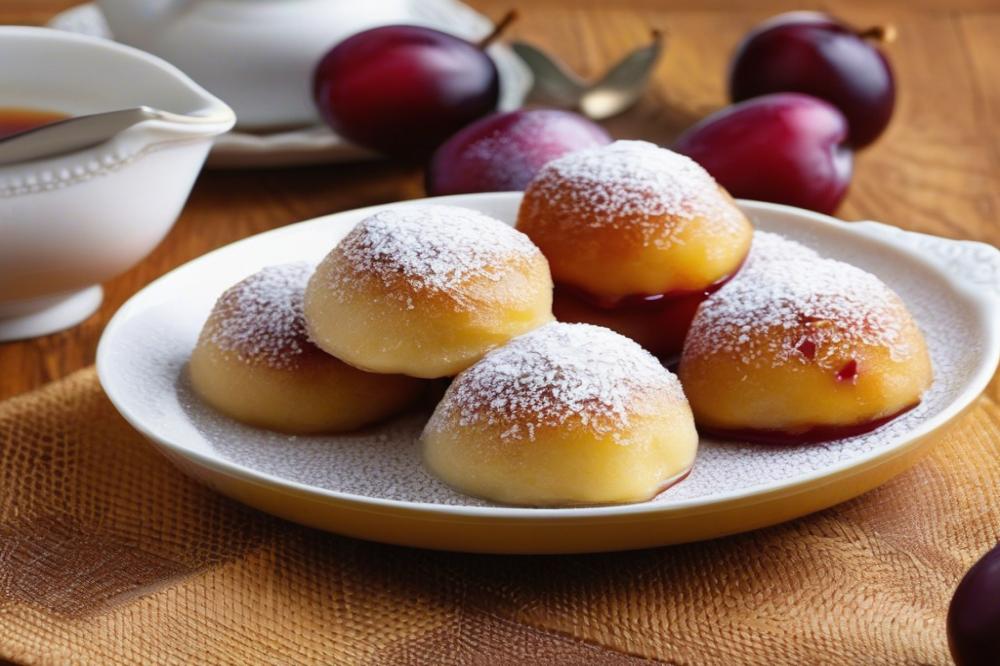Introduction
The delightful treat known as Pastéis de Nata has an intriguing history. Originating from the 18th century, these delectable custard tarts first appeared in the area around Lisbon, specifically in the Jerónimos Monastery. Monks created this unique dessert using leftover egg yolks, combining them with sugar and cream in a flaky pastry. Over time, these tarts gained popularity and became a staple of Portuguese cuisine.
In Portugal, Pastéis de Nata are more than just dessert; they are a cultural icon. They bring joy to many, serving as sweet treats often enjoyed with a sprinkle of cinnamon or powdered sugar. Locals savor them alongside strong coffee, making them a perfect addition to their daily routine. People also love to share them with friends and visitors, celebrating this beloved dessert as an essential part of their culinary heritage.
This article will guide you through the easy recipe, enabling you to create homemade versions of these charming Portuguese Custard Tarts in your kitchen. From making the buttery puff pastry to preparing the luscious vanilla custard, every step will be explained clearly. Additionally, we’ll explore some baking tips to enhance your skills. Whether you are an experienced baker or just starting, mastering this traditional snack can be both rewarding and enjoyable. Get ready to impress your family and friends with these delightful creations that closely resemble crème brûlée in taste!
Understanding Pastéis de Nata


Pastéis de Nata are delightful little tarts from Portugal. These sweet treats are known for their flaky puff pastry shell and rich custard filling. The top of each tart is often caramelized, giving it a beautiful golden color. This contrast between the crispy exterior and creamy interior makes them truly delicious.
In some ways, these tarts remind people of crème brûlée. Both desserts feature a creamy custard base. However, the puff pastry shell of Pastéis de Nata adds a different texture. While crème brûlée is smooth all around, the tarts offer a crunchy bite, making each experience distinct.
As for cultural significance, Pastéis de Nata are more than just a dessert. They are deeply rooted in Portuguese cuisine and enjoyed by many as a traditional snack. Families often gather at local cafés to savor these pastries. Each tart carries a history that reflects Portuguese culture and its love for sweet delights.
Making these homemade treats can be less daunting with an easy recipe. If you follow the steps closely, you will find baking delightful. Crafting your own provides a connection to the traditions. Enjoying them fresh from your oven is a unique experience.
Ingredients and Quantities


Creating mouthwatering Pastéis de Nata at home requires specific ingredients. These components come together to form delicious custard tarts that are beloved in Portuguese cuisine. Preparing this easy recipe is rewarding and enjoyable. Below is a detailed list of what you’ll need.
Puff pastry is the foundation of your dessert. Start with 500g of good quality puff pastry. This flaky layer will create that perfect texture.
Next, use 500ml of milk. Whole milk is preferred for its richness. The creaminess will be essential in achieving a smooth custard.
You will also need 200ml of cream. Heavy cream works best, as it helps in creating a luscious filling that feels indulgent.
Sugar adds the necessary sweetness, so measure out 150g. This amount balances well with the other ingredients, providing a pleasant flavor.
Egg yolks are crucial. Gather 6 yolks for that vibrant custard color and richness. They transform the mixture into a silky smooth delight.
Cornstarch, measured at 30g, plays a vital role in thickening the custard. Without it, the filling may not set properly, so don’t skip this step.
For a touch of flavor, include 1 teaspoon of vanilla extract. This ingredient enhances the overall taste and elevates your sweet treats.
A single cinnamon stick adds warmth and complexity. It infuses the custard with a mild spice, reminiscent of crème brûlée.
Gathering these ingredients makes the baking process straightforward. With each element in place, you’ll be ready to create delightful traditional snacks for yourself or to share with loved ones.
Method for Making Pastéis de Nata


Step-by-step Cooking Instructions
Making the perfect Portuguese Custard Tarts at home can be a satisfying experience. Players in the kitchen often enjoy a simple process that yields delicious results. This part focuses on preparing your ingredients and carefully following each step.
Preparing the Puff Pastry
Start by thawing the puff pastry in the refrigerator. Fresh, cold pastry makes it easier to handle. Roll out the dough on a lightly floured surface until it becomes thin. Cut the pastry into circles. Each piece should fit snugly in your muffin pan. Gently press the circles into the greased pan. This step is crucial for the base of your tarts.
Making the Custard Filling
For the custard, gather your eggs, milk, sugar, and cornstarch. Whisk together the egg yolks and sugar in a bowl. Mix until smooth and creamy. Then, heat milk in a saucepan until it simmers. Combine the two mixtures slowly. Stir continuously to avoid lumps. Add a bit of vanilla extract for flavor. Cook over low heat, stirring until thickened. This filling can remind one of crème brûlée due to its smoothness.
Assembling and Baking the Tarts
Once your custard has cooled slightly, fill the pastry shells about three-quarters full. This allows room for the filling to puff up slightly during baking. Preheat the oven to a high temperature, typically around 220°C (430°F). Bake the tarts until golden brown and the custard appears slightly charred on top. This rustic look is part of the charm of these sweet treats.
Cooling and Serving Tips
After baking, remove the tarts from the oven. Let them cool in the pan for a few minutes, then transfer to a wire rack. This prevents sogginess in the bottom. They are best served warm but can also sit at room temperature. Dust with cinnamon or powdered sugar if desired. Whenever folks share these traditional snacks, they always delight in their rich flavor. Enjoy your homemade desserts with coffee or tea for an authentic experience!
Nutritional Information


Breakdown of Calories per Ingredient
Each ingredient in your homemade recipe plays a specific role. For example, puff pastry often has around 200 calories per serving. Milk contributes a creamy texture at approximately 150 calories per cup. Sugar adds sweetness, clocking in at 49 calories per tablespoon. Eggs also hold their own with about 70 calories each. These numbers can add up quickly, so it’s good to be aware.
Carbohydrates, Fats, and Proteins per Tart
When you bake a single tart, it usually contains about 20 grams of carbohydrates. This comes mainly from the pastry and sugar. Fat content may reach 9 grams, largely due to the butter in the puff pastry. As for protein, each tart offers roughly 3 grams, mostly from the eggs and milk. These figures provide a quick snapshot of what you’re indulging in.
Discussion on Health Aspects of Enjoying Sweets
Sweet treats can certainly fit into a balanced diet. Many people enjoy desserts like custard tarts as an occasional reward. Moderation is key. They can provide happiness and comfort. Instead of indulging every day, treat them as special delights. Additionally, these traditional snacks like pastéis can introduce you to the richness of Portuguese cuisine. Enjoying crème brûlée might be just as enticing, yet the experience is different. Food should bring joy, not stress. Balance your sweet moments with healthier choices elsewhere in the day. Always remember, enjoying sweets isn’t just about calories; it’s also about memories and enjoyment.
Tips for Perfect Pastéis de Nata
Choosing the Best Ingredients
Using high-quality ingredients is essential for great results. Start with fresh eggs. They play a crucial role in creating a rich, creamy custard. Look for full-fat milk or cream to add depth to the filling. A good vanilla extract can make a big difference. Do not skimp on the puff pastry, as it must be flaky and buttery. Choose a brand that you trust or make your own if you feel adventurous. These decisions will elevate your homemade desserts.
Common Mistakes to Avoid in Baking
One frequent error is not preheating the oven adequately. A hot oven ensures an even bake and helps the custard set correctly. Overfilling the tartlets is another common pitfall. Too much custard can overflow and create a mess. Remember to watch the baking time closely. Every oven is different, and tarts can burn quickly if left unattended. Cooling the tarts properly is vital. Allowing them to sit in the pans for a few moments helps them firm up before transferring to a wire rack.
Storage Instructions for Homemade Tarts
Storing your sweet treats correctly is important for keeping them fresh. If you have leftovers, refrigerate them in an airtight container. Baked custard tarts can last up to three days this way. Avoid freezing them as this may alter their texture. If you plan to eat them later, consider warming them briefly in the oven to revive the flavor and crispiness of the pastry. For best results, enjoy your Pastéis de Nata within a couple of days to savor them at their finest.
Final Thoughts on Homemade Delights
There is something special about creating your own treats at home. Making these creamy custard tarts brings joy to the kitchen. Each step of the process fills the air with a delightful aroma, making it hard to resist the temptation. The warmth that comes from fresh pastries baked right from your oven is truly unmatched. Enjoying your own creations adds a sense of accomplishment that store-bought desserts simply cannot provide.
Now is the perfect time to embark on this culinary adventure. Trying out this easy recipe can be both fun and rewarding. Friends and family will surely be impressed by your baking skills. Just imagine their smiles as they savor the crispy, flaky crust combined with the sweet, velvety filling. Encouragement to experiment is all around, so dive in and discover how much you can enjoy this process.
Exploring more Portuguese recipes can open the door to a whole new world of flavors. Treat yourself to traditional dishes, and expand your culinary repertoire. From savory stews to delicious pastries, the possibilities are endless. By preparing these meals at home, you can experience the heart of Portuguese culture right in your kitchen.



